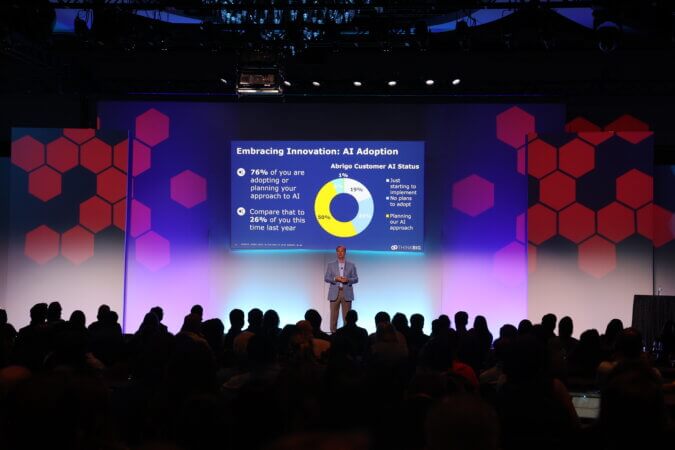1. Keep small businesses resilient amid economic uncertainty
Banks and credit unions understand the role small businesses play in their communities. But with the economic outlook murky and business demographics shifting, speakers at ThinkBIG 2025 challenged institutions to reassess the opportunity and how they’re supporting this segment—and to sharpen the tools, products, and services they use to do it efficiently.
Ginger Siegel, North America Small Business Lead at Mastercard, noted that some six million new small businesses launched in 2024 alone, a dramatic increase from fewer than 900,000 in 2018. But inflation, labor shortages, and tariffs are leading many to put off investments and capital requests, several speakers said.
Without the cash provided during COVID, the uncertainty is tough for small businesses, and it’s tough for lenders trying to make credit decisions. One commercial banker described how a meeting with a “perfect” borrower to “check boxes” related to tariff risk described how 70% of its suppliers were in China, and it wasn’t sure how it will adjust.
To help businesses stay resilient, speakers encouraged banks to connect frequently with small businesses and pair relationship banking with modern data and technology. That includes alternative data for underwriting, such as real-time receipts, as well as automation with small business lending software to compete with fintechs’ faster decision times. It may also mean offering different products or services beyond checking, savings, and loans.
“Small businesses don’t want to be sold to, they want to be spoken to,” Siegel said. They often need help with cybersecurity, succession planning, and managing cash flow, which is why Mastercard recently built an expense management solution for small businesses.
Several institutions described bundling treasury management and fraud-protection services to boost efficiency and deepen relationships. These value-added services not only strengthen margins, they also make it harder for small businesses to leave when rates shift.







